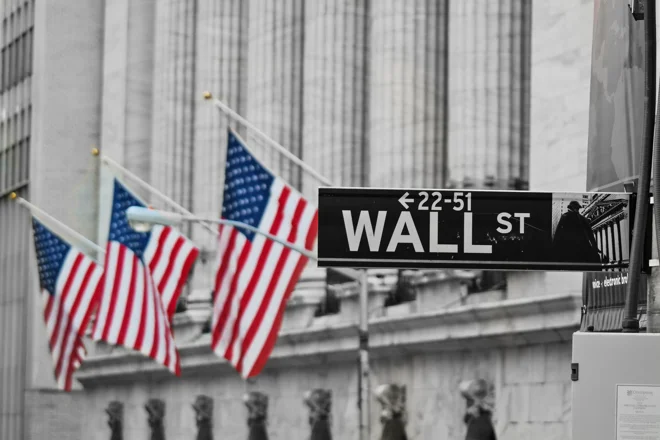Once again, the rise in core bond yields is driving markets across geographies, asset classes, sectors and styles, with a sharp equity rotation away from growth and into value stocks. In the James Bond movie series, 007 eventually overcomes an improbable sequence of obstacles and makes it through (spoiler alert: except in No Time to Die). We think the fundamental picture supports bond yields and risk asset prices, including equities, both rising – though the outlook is becoming less favourable. Economic and earnings growth is peaking, but remains above trend. Inflation is likely to peak through 2022, but should stay above central bank targets at year-end. It’s also likely to be a year of volatility, as policymakers tighten from record levels of accommodation. Strategists can’t provide investors with the same inventions that Q delivers to Bond and, despite the gadgets, not even cinematic secret agents always make it through 100% unscathed. While there’s light and shade in the short-term outlook, the longer-term one remains constructive.
Macro outlook | Resetting but still not reset: 2022 will likely see still above-trend but peaking economic growth and still above-target but peaking inflation. In part, this is because of tighter monetary and financial conditions. We expect rate hikes to be relatively gradual by historical standards, although high inflation and the rapid recovery in job markets, especially in the US, have accelerated central banks’ desire to return the policy stance back to neutral. The reason why we think policymakers still aim for at least some degree of gradualism is that initial conditions do matter: high debt levels and central banks’ efforts to reduce their balance sheets suggest to us that interest rate policy can be normalised progressively – not abruptly. If this weren’t the case, central banks themselves could become a major market disruptor. This is why we believe it’s important for investors to avoid overemphasising the likely ‘red hot’ series of inflation prints over the next few months.
Monetary policy | Tightening but still not tight: Declining labour market slack has made Fed officials more sensitive to upside inflation risks and less sensitive to downside economic risks. The latest minutes did convey a greater sense of urgency on balance-sheet normalisation than the market had expected. Some members of the committee – the more hawkish ones – suggested that the run-off may start after just one hike. With no more net asset purchases from April, we think the central bank may start shrinking its balance sheet from around mid-year. With inflation probably slowing but still far above target at that point, we see four hikes in 2022: March, June, September and December. At this pace, it would take about a year and a half to return to pre-Covid levels, which were still accommodative. Back then, 10-year Treasuries were not even yielding 2%. Our expectation for the terminal Fed funds rate is 2.5% to 3%, though the range of possible outcomes is very wide.
Here’s why this matters:
More volatile backdrop for risk-taking: The new year started with high volatility. Rising interest rates weighed particularly on tech stocks, while Asia high-yield bonds faced persistent credit stress (though showing signs of recovery over the past few days). We think the environment remains constructive for risk assets, although not as much as last year. This is because most of the monetary tightening that we expect to materialise in 2022 is priced in by now, and corporate earnings growth remains strong (if slowing). We stick to our overweights in US equities, emerging market sovereign hard currency and Asia high-yield bonds, while underweighting low-yielding government bonds. Large-cap and high-quality companies have historically tended to cope better in this mid-cycle environment, especially as supply chains should heal. High inflation could adversely affect the earnings multiples for share prices, while companies with pricing power could benefit.
It’s all about balance sheets: We think this mid-cycle phase should be somewhat more asynchronous as central banks move at different speeds: the Fed and the Bank of England will likely hike rates several times this year and start shrinking their balance sheets. The ECB should continue to buy assets (but more slowly) and not hike just yet. We wouldn’t rely upon short-term market views and watch for potential investor overreactions to the newsflow on inflation and central banks. A duration underweight makes sense to us and we think the yield curve should steepen even in light of the recent repricing of short-term rates for forthcoming Fed hikes (which should flatten it). Our yield curve expectations are shaped by the upcoming Fed balance-sheet run-off. Shrinking the Fed balance sheet should push long-dated bond yields higher and this should allow the central bank to raise short-term rates without inverting the yield curve, which tends to unsettle investors.
Meanwhile, this week’s Fed meeting is likely to be a big one…
Rate lift-off approaches: Markets will likely focus on whether the Fed (Wednesday) will indeed signal a rate hike to be delivered in March and announce no extra net asset purchases from April. We also have Q4 GDP in the US (Thursday), which could show an acceleration as the Omicron variant had relatively less impact than the Delta variant previously. But January’s purchasing managers’ indices (Monday) across the US, the euro area and the UK may perhaps moderate slightly, as the Omicron impact becomes more evident. To some extent, these numbers are backward-looking, as they don’t capture the upcoming relaxation of the restrictions. The German Ifo business climate (Tuesday) and China’s purchasing managers’ indices (Friday) could be important to gauge any sign of stabilisation after previous weakness. We’ll also keep an eye on oil prices, given the recent rise, with the market likely focusing on any news related to a possible strategic oil reserves release from the US and China.
Daniele Antonucci | Chief Economist & Macro Strategist
This document has been prepared by Quintet Private Bank (Europe) S.A. The statements and views expressed in this document – based upon information from sources believed to be reliable – are those of Quintet Private Bank (Europe) S.A. and are subject to change. This document is of a general nature and does not constitute legal, accounting, tax or investment advice. All investors should keep in mind that past performance is no indication of future performance, and that the value of investments may go up or down. Changes in exchange rates may also cause the value of underlying investments to go up or down.
Copyright © Quintet Private Bank (Europe) S.A. 2022. All rights reserved.





